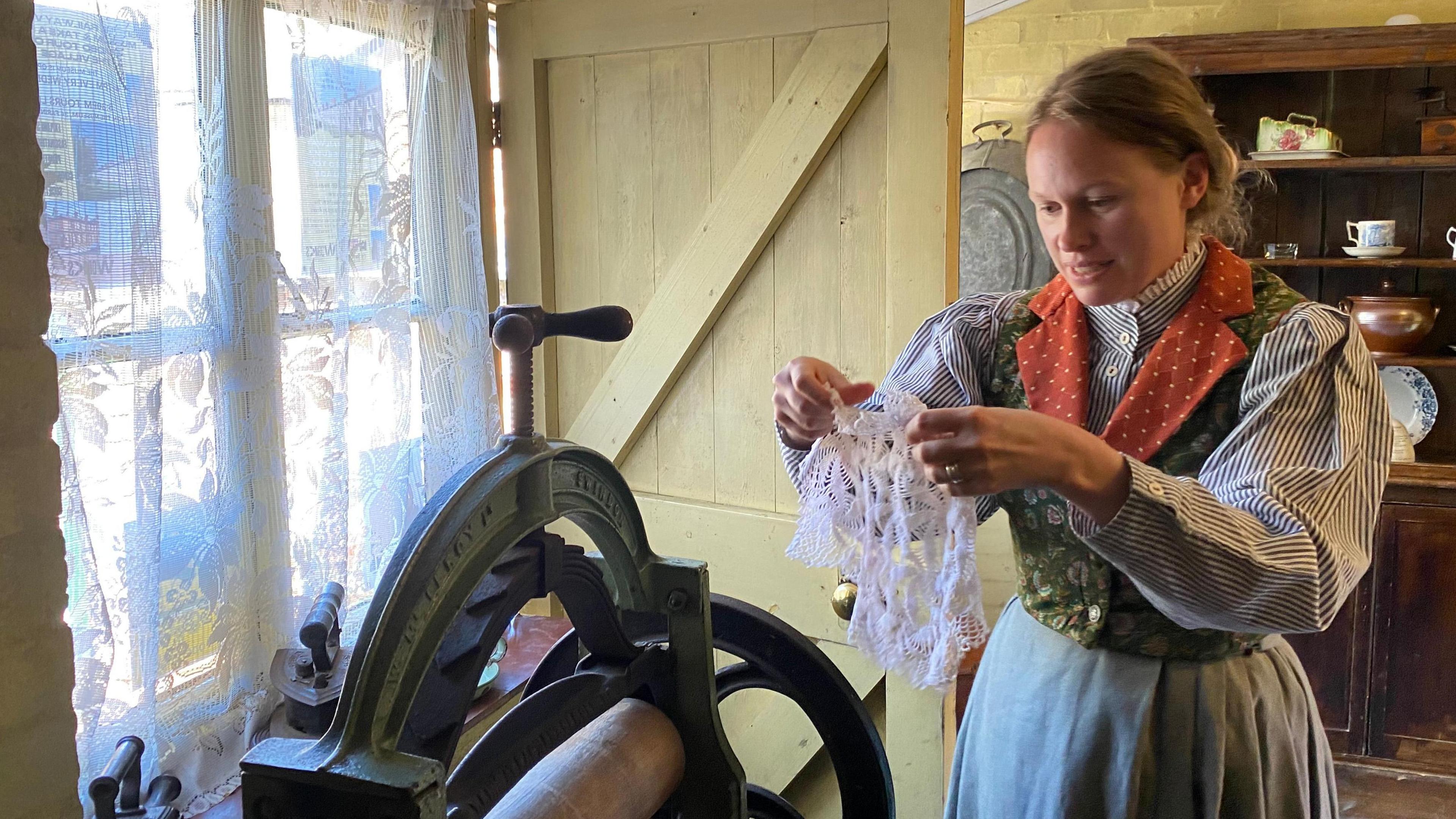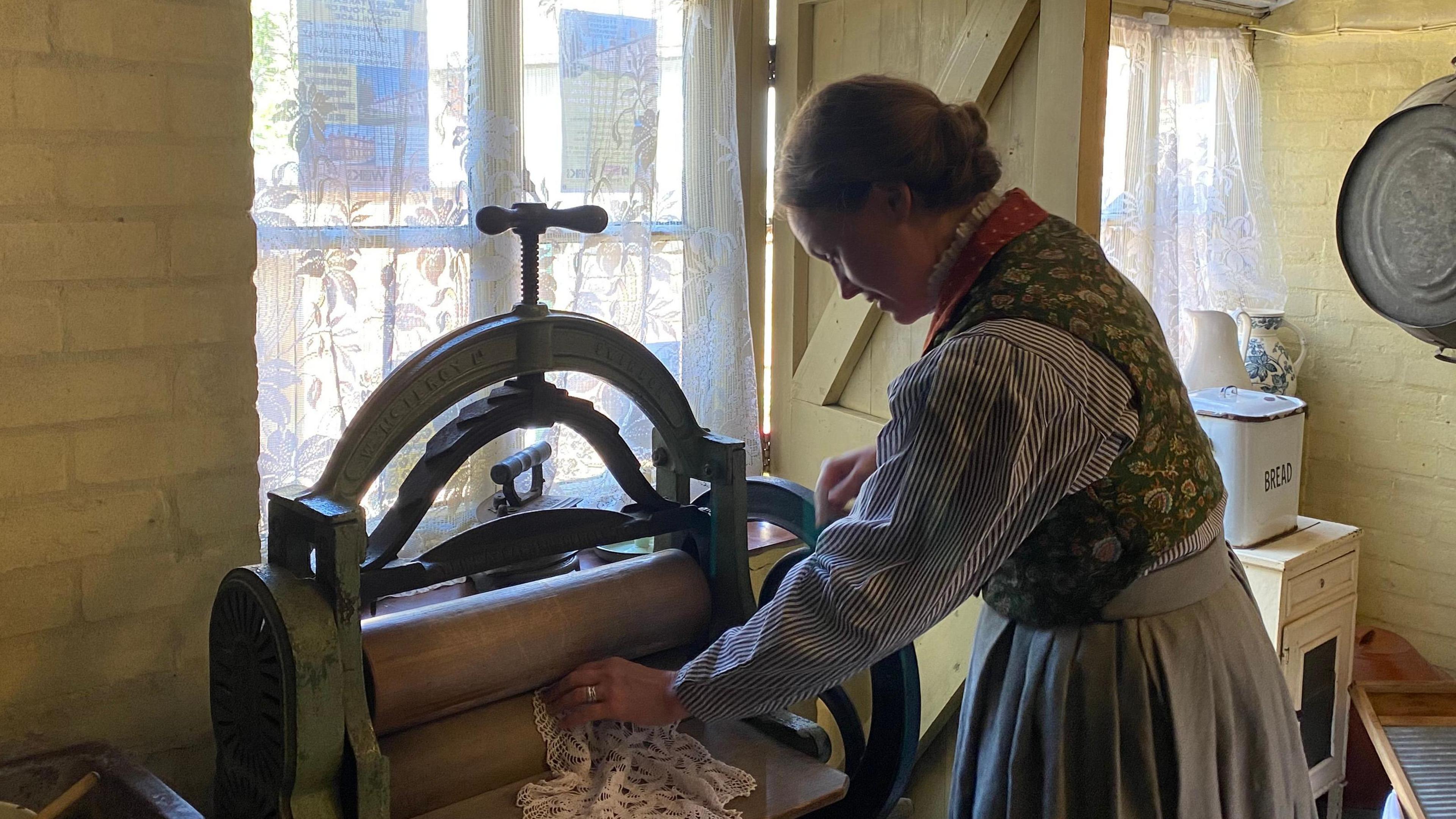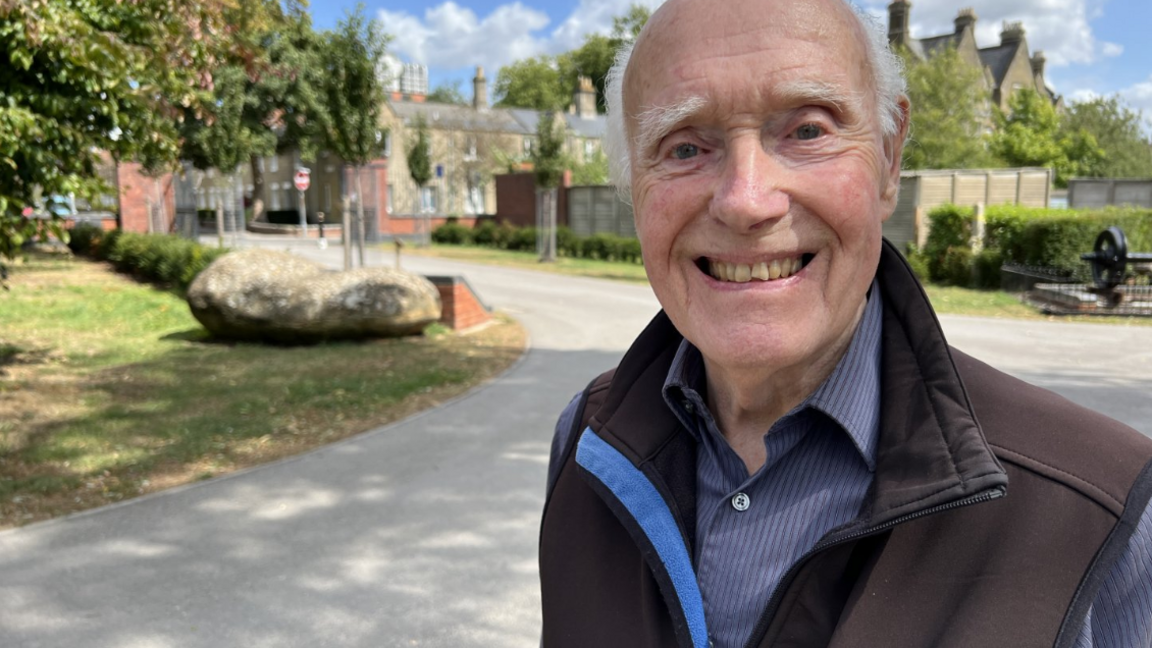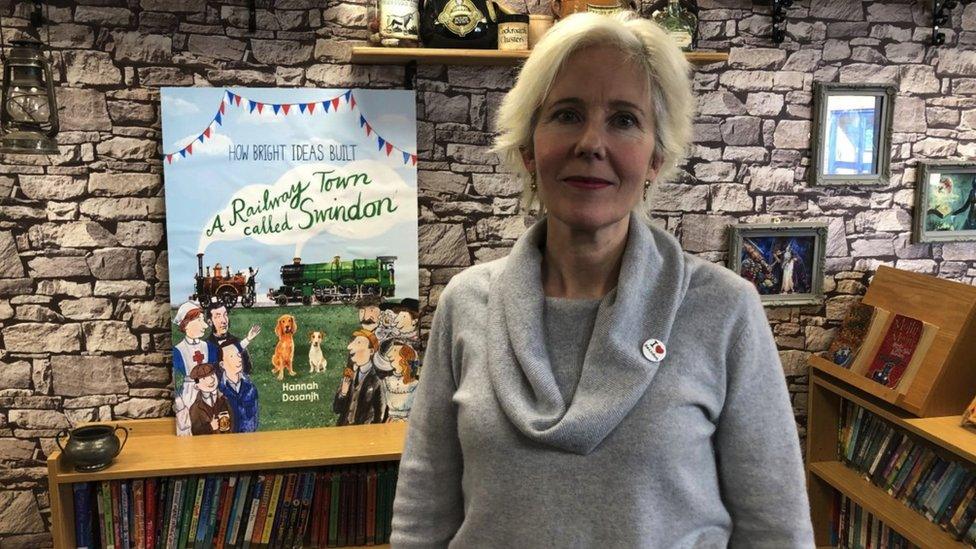Children to learn GWR history through interactive show

The performance includes people playing the roles of well-known residents of the town's railway village at the time
- Published
School children are being given the opportunity to learn about the birth of the Great Western Railway (GWR) thanks to a new free interactive theatre show.
Performed by Prime Theatre, Meet Mrs Smith will take place at Swindon's Railway Cottage Museum in November and tells the story of family and work life for railway workers in 1901.
The project, which is funded by GWR and is run by the Mechanics' Institute, includes people playing the roles of well-known residents of the town's railway village at the time.
Mark Powell, artistic director at Prime Theatre, said: “We know teachers are sometimes desperate for exciting ways to bring history to life, so this is a rare and free opportunity to unlock a resource on the doorstep."

Children will be able to experience the normal day of a railway family in 1901
Encouraging schools to sign up to attend, Mr Powell said: "We’re really grateful to the GWR’s Customer and Community Improvement Fund for this chance to open up the amazing stories around us."
Dan Fishlock, from the Mechanics' Institute, said: "We are always seeking creative ways to help schools bring local history to life for young people.
"Projects like this allow us to connect new generations with their surroundings and relate to the stories of those who came before them."
Railway heritage
The town's railway links date back to 1843, with the opening of the Swindon Railway Works - after Victorian engineer Isambard Kingdom Brunel needed a central repair works for his railway.
One of the largest engineering complexes in the world, the repair and maintenance facility employed more than 40,000 workers and the site thrived for more than 140 years as the national hub of engine building in the UK.
While the 300-acre (120 hectare) site closed in 1986, the town's railway heritage is still prominent, with the likes of the railway village and STEAM museum.
Get in touch
Tell us which stories we should cover in Wiltshire
Follow BBC Wiltshire on Facebook, external, X, external and Instagram, external. Send your story ideas to us on email or via WhatsApp on 0800 313 4630.
Related topics
- Published24 August 2024

- Published7 March 2024
